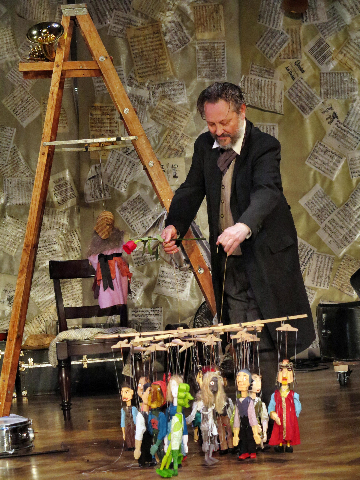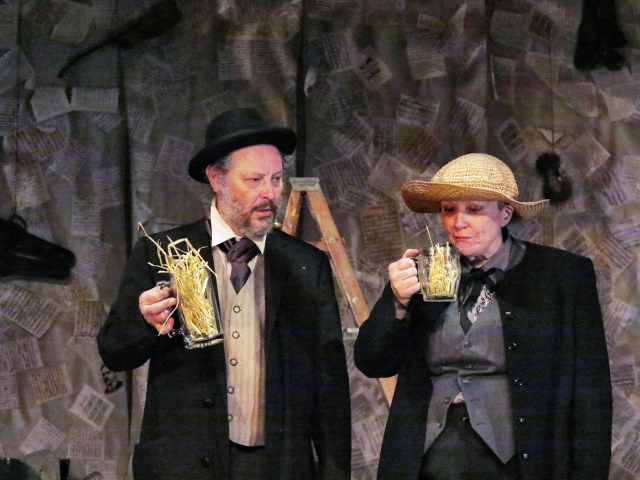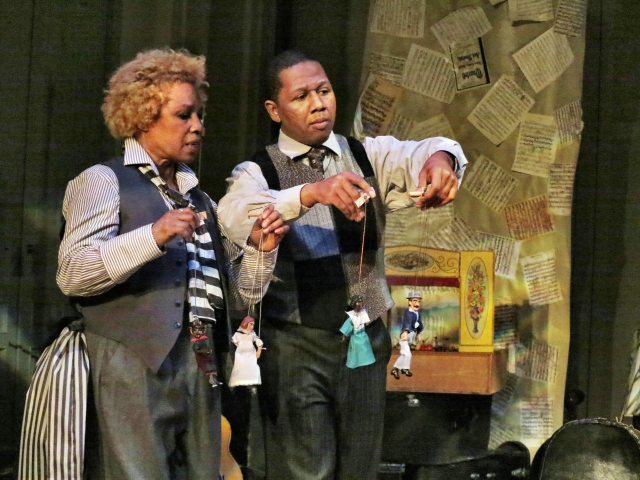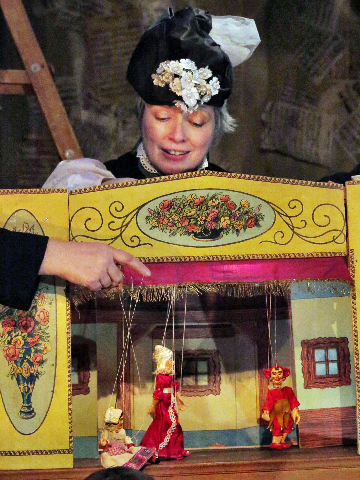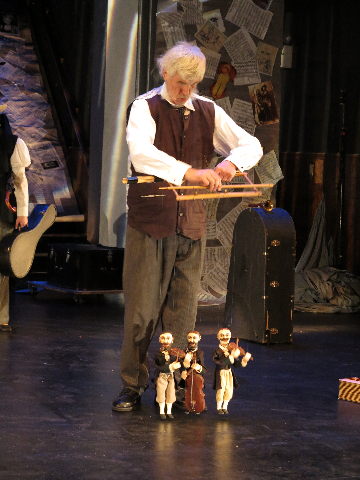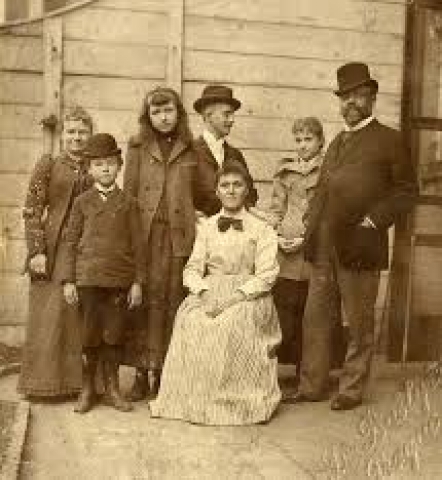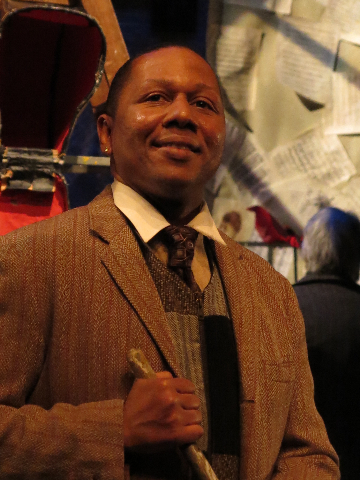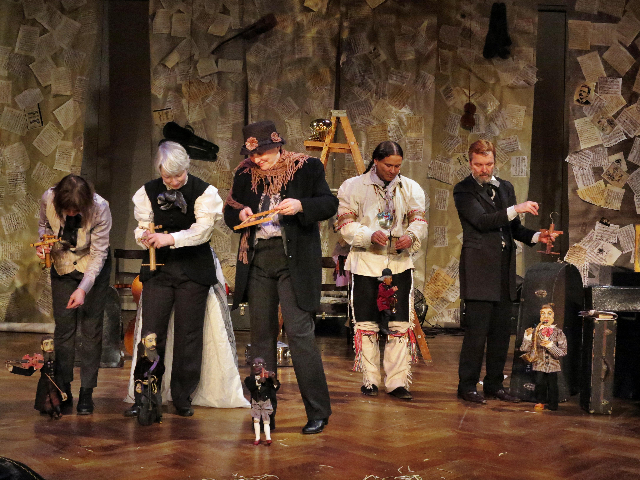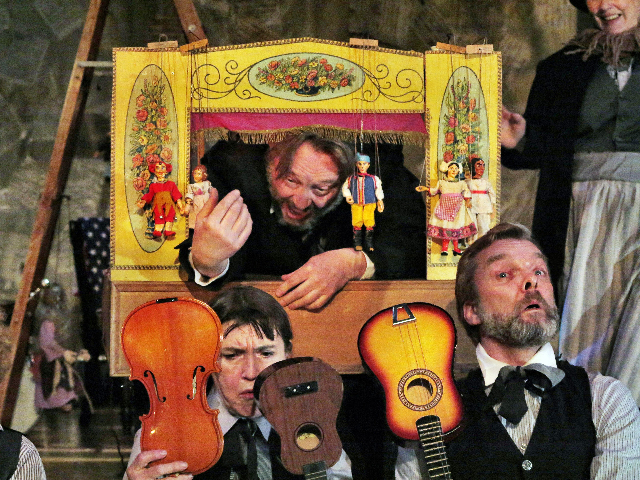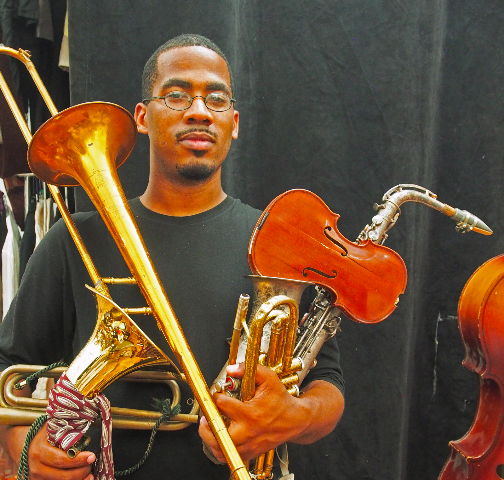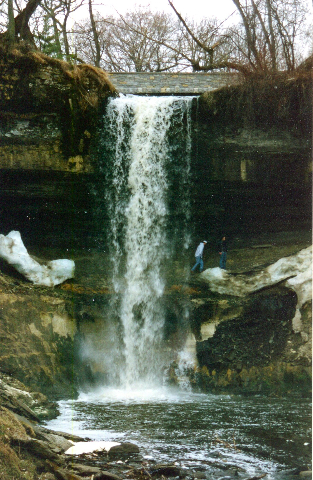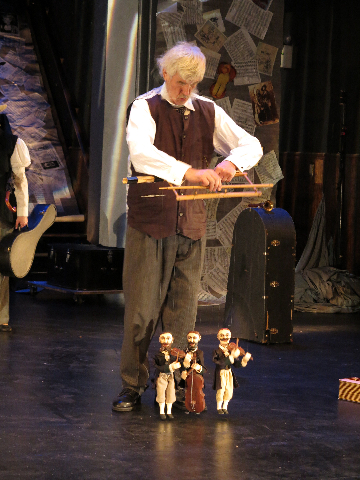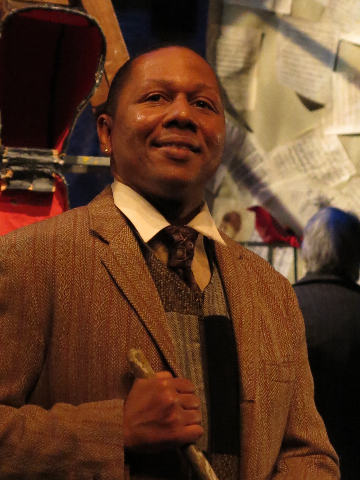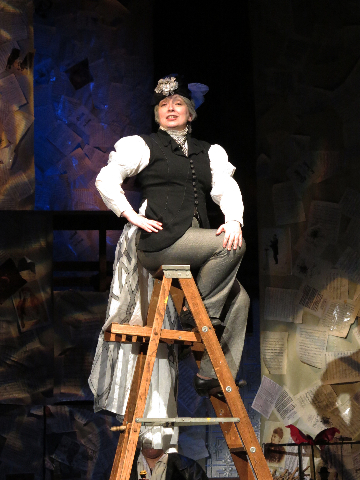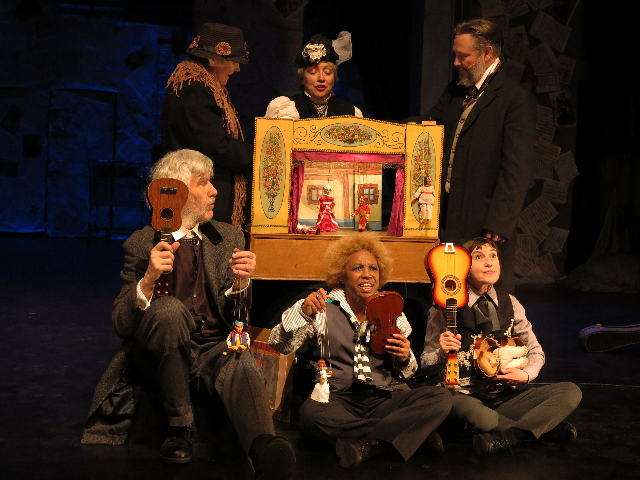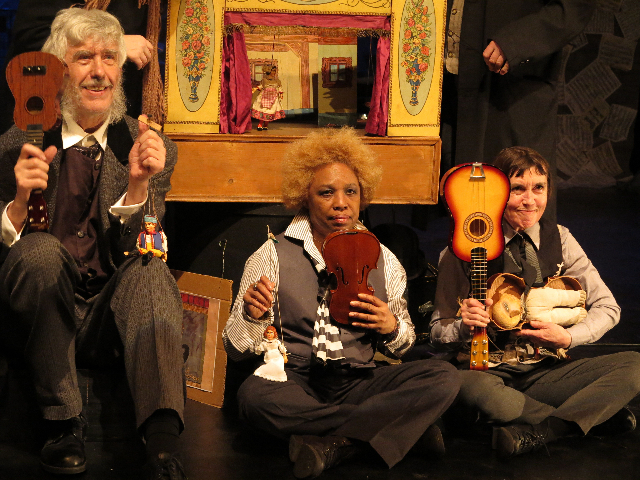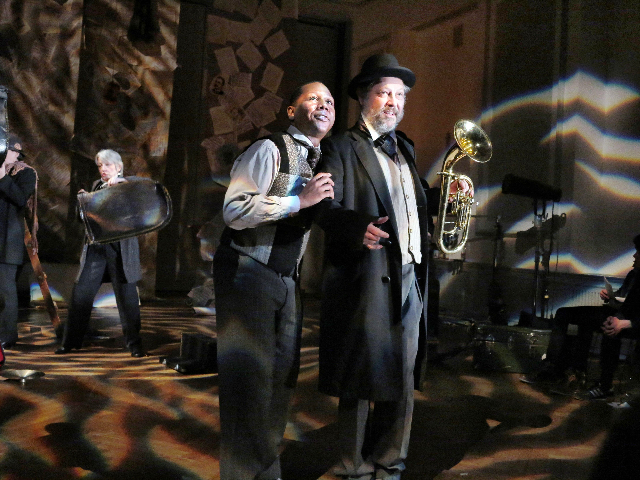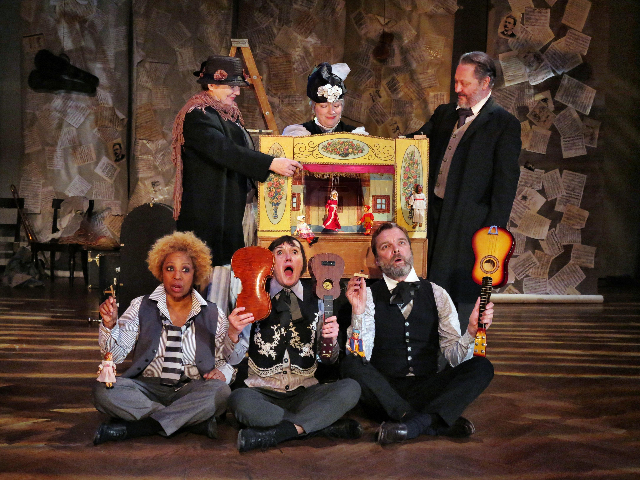LaMama Discovers American Music
Dvorak Pricks Up His Ears
By: Susan Hall - Mar 12, 2016
The New World Symphony: Dvorak in America
Written and directed by Vít Horejš
Music by Antonin Dvorak and James Brandon Lewis
Set Design: Tom Lee
With Deborah Beshaw-Farrell, Michelle Beshaw, Vít Horejš, Harlem Lafayette, Theresa Linnihan, Valois Mickens, John Scott Richardson and Ben Watts
JBL Trio James Brandon Lewis, saxophone; Luke Stewart, bass; Warren Trae Crudup III, percussion.
Photos Courtesy Jonathan Staff
How does a musical composition come to be?
The New World Symphony by Antonin Dvorak was composed while he lived at 17th street in New York City.
In a wonderful, chaotic and jazz-impelled telling of the story of Dvorak in this country, the Czechoslovak-American Marionette Theatre combines puppets, background and foreground, to tell the story of the composer pricked up his ear to American sounds and how they contributed to his compositions.
Surprisingly we hear Song to the Moon from Rusalka which Dvorak wrote back home, but which is attributed to rising rivers during his residence in Iowa. Was this like baseball being invented in Russia?
Jeannette Thurber, the wife of a mogul, started the National Conservatory of Music, and talked Dvorak into coming to America to head the institution. Women and minorities were to be students, a novelty at the time.
When the New World Symphony premiered in 1900, critic William Henderson asked "Is this music American?" Like the production at La Mama, his answer was clear as a bell: Yes. “The plantation songs of the American negro possess a striking individuality...They have in their growth been subjected to local influences which have made of them a new species. (These songs) are never less than American. Our South is ours…Its twin never existed. Out of the heart of this slavery, environed by this sweet and languorous South, from the canebrake and the cotton field, arose the spontaneous musical utterance of a people... that folk music struck an answering note in the American heart."
Dvorak lent the weight of his authority as a master European composer to Swing Low Sweet Chariot, and Deep River, wholly new music for him.
Tucked into stage right of the Ellen Stewart Theatre were a group of musicians, bringing us the jazz future.
They are Dvorak’s heirs. The composer had said, eight months after arriving in the US, “In the negro melodies of America I discover all that is needed for a great and noble school of music. They are pathetic, tender, passionate, melancholy, solemn, religious, bold, merry, gay of what you will. It is music that suits itself to any mood or any purpose."
Critic Henderson thought the slow movement of the New World was "like an idealized slave song made to fit the night quiet of a prairie."
The buried sorrow of the prairie also forced itself on Dvorak and shows up in the symphony’s second movement. After Dvorak died, his student, William Arms Fisher, turned his Largo into a popular ersatz spiritual Goin’ Home.
The opening of the scherzo movement with its tom-tom beat was inspired by America’s most popular poem Hiawatha, by Henry Wadsworth Longfellow,and the dance of Pau-Puk is from Hiawatha's wedding. The sad death of Minnehaha also is buried the Largo movement.
The vastness of America impacted Dvorak. Tall chords,are widely spaced top to bottom and Frederic Church’s Hudson River landscapes are captured in music.
Henderson also found the energetic spirit of Americans running through the symphony.
Probing beyond America’s wide range of sights and sounds Dvorak looks for unity of spirit.
One of Dvorak's students who appears in this play, Harry Burleigh, was the first singer to arrange negro spirituals as art songs and set the stage for Paul Robeson and Marian Anderson.
A composer must prick his ear, said Dvorak.. And so too must we.
The screech of elevated trains (a train runs along a track at the lip of the stage), the Babel of languages, the whoop and cry of Buffalo Bill's Wild West and the silence of the Iowa prairie, the ripple of the Minnehaha Falls all show up in Dvorak. He lost his American accent when he returned to Prague, but this terrific show has captured it now for us as marvelous entertainment.
Synergies abound of the old world and the new. Outsider and insider. Memory and discovery. All are gathered into this lively exploration of America’s music by the Czech composer, and the launch of jazz, performed by the terrific JBL Trio, whose saxophone player, James Brandon Lewis, also designed the music for the play.

